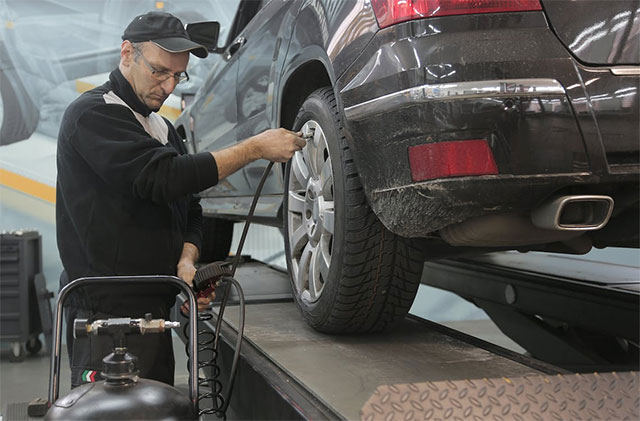Car safety technology is evolving rapidly and is designed to protect drivers, passengers, and pedestrians. Unlike in the old time, when safety additions amounted to a few airbags, seatbelts, anti-lock brakes, and traction control, nowadays, most buyers will barely pay for a car unless it has ample of the latest safety features.
Table of Contents
Latest Car Safety Features
With recent technological progress, the focus has shifted to averting accidents before they occur. Newer cars are equipped with a bunch of safety features that give drivers peace of mind when behind the wheel.

Here is an overview of the latest car safety features you should be looking for when buying a new car.
Overhead or 360 Degree Vision
Even though the latest car models come with a rear-vision camera and parking sensors, others provide a bird’s eye view of your car’s surroundings through an overhead camera. This way, drivers can benefit from increased visibility now more than ever.
Automatic Emergency Braking Systems (AEBS)
The AEBS technology is a collision warning system that puts the breaks on rear-end collisions. This happens when sensors continuously gauge the distance of vehicles in front of your car. If an imminent collision is detected, the sensors activate and assist with braking by automatically applying the brakes if the driver is distracted or braking with full force (in case the driver is not braking hard enough).
Night Vision
Night vision technology hasn’t been popularized yet, but it is offered in certain brands like Cadillac, Mercedes-Benz, Audi, and Maybach. It uses a forward-facing thermographic lens to detect animals, pedestrians, and vehicles that may not be visible to the naked eye.
A display on the car’s dashboard screen shows the image of what is ahead, and some advanced systems may also give a unique visual or audible alert when an obstacle is detected.
Intelligent Speed Assistance (ISA)
Intelligent Speed Assistance is an advanced car safety technology that helps drivers adhere to speed What Is Intelligent Speed Assistance? limits by offering real-time support and information. This technology features digital maps, GPS data, and in-vehicle cameras to determine the car’s location and current speed limit. It then sends this information to the driver, allowing them to maintain a secure and legal speed.
There are two primary types of ISA systems: active and advisory. Active systems can automatically slow down a car’s speed by applying the brakes or reducing engine power. On the other hand, an advisory system provides auditory and/or visual alerts when the car surpasses the speed limit, thus allowing the driver to control their speed accordingly.
Lane Departure Warning/Lane-Keeping Assist
Although these two are separate systems, they aim to keep the drivers in their lane. A lane-keeping assist guides your vehicle to initiate a slight steering or braking adjustment so it doesn’t swerve uncontrollably and crashes with another car.
On the other hand, a lane departure warning alerts the driver when their car begins to deviate from its lane and starts going in another one. It is done through a vibration, beep, or visual cue on the instrument panel.
Blind Spot Detection
A blind-spot detection system gives an audible warning to the driver and turns on the light on the side view mirror when another car is nearby. This technology eliminates some danger of changing lanes.
Final Thoughts
Car safety technology is advancing rapidly and can significantly reduce the number of car accidents each year. However, these features do not guarantee safety 100%. If you have become a victim of a car accident, a personal injury lawyer will be able to provide you with the right tools and legal representation. Get in touch with a lawyer in your area to discuss your options and see what can be done to manage the situation better.













